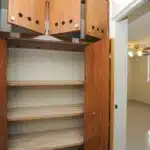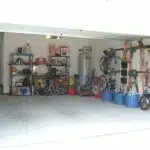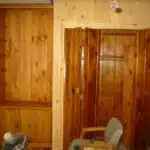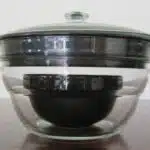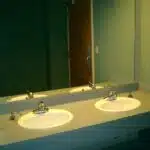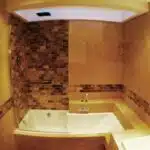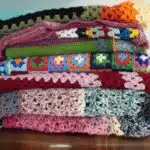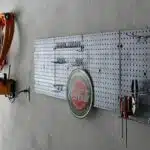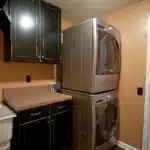Having a shed can be an incredibly useful addition to any property, providing extra storage space for outdoor equipment, tools, and other miscellaneous items. However, it’s all too easy for a shed to become cluttered and disorganized, making it difficult to find what you need when you need it. This is where effective organization comes in – by taking the time to properly sort and arrange your shed, you can make the most of this valuable space.
As a professional organizer with years of experience helping clients declutter and organize their homes and outdoor spaces, I’ve seen firsthand just how much difference good organization can make. In this article, I’ll be sharing some of my top tips on how to organize a shed effectively, including everything from sorting through your belongings to choosing the right storage solutions for your needs. Whether you’re dealing with a small garden shed or a larger storage space, these tips will help you make the most of your available resources and create a neat and tidy space that serves your needs.
Assessing Your Storage Needs
Did you know that according to a survey conducted by the Self Storage Association, Americans spend approximately $38 billion annually on storage units? That’s a lot of money spent on storing belongings outside of our homes. However, before you start searching for a storage unit or piling up your shed with more stuff, it’s essential to assess your current storage needs.
Assessing your storage needs is the first step towards organizing your shed. This process involves analyzing how you utilize your space and identifying areas where you can maximize it. It’s crucial to take note of the items you currently store and what you plan to add in the future. Consider whether these items are frequently used and if they require specific conditions like temperature control or extra security.
Another factor to consider when assessing your storage needs is future growth. Are there any new hobbies or activities that might require additional equipment or tools? Will family size increase in the future? Answering these questions will help determine how much space and what type of storage solutions are necessary for your shed. Remember, it’s always better to have more space than not enough, so plan accordingly.
Now that we understand the importance of assessing our storage needs let’s move on to decluttering our sheds. By getting rid of unused and unwanted items, we free up valuable space for more important things while also reducing clutter and stress in our lives.
Decluttering Your Shed
The first step to organizing a shed is to declutter. This means getting rid of things that you no longer need or want. Tips for downsizing include asking yourself if you have used an item in the past year, if it has sentimental value, or if it could be easily replaced if needed. If the answer is no, then it’s time to let go.
Donating unwanted items can also be a great way to declutter and give back to your community. Consider donating items that are still in good condition but don’t serve a purpose for you anymore. There are many donation centers that accept household items, outdoor gear, and tools.
Creative ways to repurpose old storage containers can also help with decluttering and organization. For example, an old toolbox can be used as a gardening caddy or a plastic bin can become a pet food storage container. Look around your shed and think about how different containers could serve new purposes.
In the next section, we will discuss categorizing your belongings to make them easier to find and access when needed. By following these steps of decluttering, donating unwanted items, and repurposing old storage containers, you’ll be well on your way to creating a more organized and functional shed space.
Categorizing Your Belongings
The first step in organizing your shed is to categorize your belongings. Color coding and grouping by frequency are two effective techniques that can help you achieve this task. Color coding involves assigning a specific color to each group of items, which makes it easier to identify them at a glance. Grouping by frequency involves arranging items according to how often you use them, with frequently used items placed in easily accessible areas.
To begin categorizing your belongings, start by sorting them into broad categories such as garden tools, sports equipment, and household supplies. Once you have sorted them into broad categories, you can then subdivide them into more specific groups based on their function or size. For example, within the garden tools category, you may have subcategories such as hand tools, power tools, and lawn care equipment.
Color coding can be used to further differentiate between different types of tools or equipment within each category. For instance, you could use green for lawn care equipment and blue for water-related tools like hoses and sprinklers. Grouping by frequency can be especially helpful when deciding where to store different items within your shed. By keeping frequently used items in easily accessible locations and storing less frequently used items further away, you can save time and effort when retrieving the things you need.
Transition:
Now that you have categorized your belongings based on function and frequency of use, the next step is to choose the right storage solutions for each group of items.
Choosing The Right Storage Solutions
When it comes to organizing a shed, one of the most important considerations is choosing the right storage solutions. There are many factors to consider, including your budget, the size and layout of your shed, and the types of items you need to store. Fortunately, there are many options available that can help you create an organized and functional space.
One popular option for shed storage is modular systems. These systems typically consist of interchangeable components that can be arranged in a variety of configurations to meet your specific needs. Some modular systems come pre-designed and ready to install, while others offer more flexibility so you can create a custom solution. DIY solutions are another great choice if you’re looking for something more budget-friendly. With a little creativity and some basic tools, you can create your own storage solutions using materials like wood pallets or PVC pipes.
If you’re concerned about the impact of your storage choices on the environment, there are many eco-friendly choices available as well. For example, you might choose containers made from recycled materials or opt for products that are designed for long-term use rather than disposable options. Additionally, many companies now offer sustainable alternatives to traditional storage solutions.
In summary, choosing the right storage solutions is key to achieving an organized and functional shed. Modular systems and DIY solutions offer flexibility and affordability, while eco-friendly choices help minimize your environmental impact. In the next section, we’ll explore how maximizing vertical space can further enhance your shed’s organization and efficiency.
Maximizing Vertical Space
As we continue organizing our shed, it’s important to maximize all available space, including the vertical areas. By utilizing vertical shelving, we can create additional storage without taking up valuable floor space. This will allow us to store more items in the shed while also making them easily accessible.
Hanging baskets are another great way to utilize vertical space. They can be hung from the ceiling or attached to walls and used to store smaller items such as gardening tools or cleaning supplies. By keeping these items off the ground, we reduce clutter and make it easier to find what we need.
Overall, maximizing vertical space is crucial when organizing a shed. With the use of vertical shelving and hanging baskets, we can create more storage space without sacrificing accessibility or creating clutter. In the next section, we will discuss labeling containers and shelves to further optimize our organizational system.
Labeling Containers And Shelves
To effectively organize a shed, maximizing vertical space is crucial. Utilizing walls and overhead storage can create more floor space for larger items while keeping smaller items easily accessible. Hanging tools and garden equipment on hooks and pegboards is a simple solution that doesn’t take up valuable floor space.
Once the vertical space has been optimized, labeling containers and shelves is the next step in creating an organized shed. DIY labeling hacks such as using chalkboard paint or repurposing old jars can be cost-effective and fun. However, for those who prefer a more professional look or have a large amount of items to label, hiring a professional labeling service can provide benefits such as uniformity and durability.
Creating a floor plan is an important aspect of shed organization that should not be overlooked. By identifying the purpose of each section of the shed, it becomes easier to determine where specific items should be stored. Additionally, creating designated zones for different categories of items such as gardening tools or outdoor sports equipment can greatly improve efficiency when searching for items in the future.
Creating A Floor Plan
- When creating a floor plan for a shed, it is important to consider the layout and how it will be used.
- Careful planning of storage is essential to make the most of the space available.
- Utilizing shelving, racks, and other organizational methods can help to maximize space.
- Assessing the items to be stored and taking measurements of the shed will provide a better understanding of the space available.
- Taking a systematic approach can help to ensure that all items are stored in a neat and orderly fashion.
- Making use of unused vertical space by hanging items, as well as other creative storage solutions, can also be beneficial.
Creating A Layout
To create an organized shed, it is essential to start by creating a layout. This involves taking inventory of all the items that will be stored in the shed and determining the best place for each item. Creating a shed inventory will help you determine which items are frequently used and need to be easily accessible, and which ones can be stored further back. Once you have identified all the items, it’s time to start planning your floor plan.
Utilizing wall space for storage is an excellent way to maximize your storage options in a shed. You can install shelves or pegboards on the walls to store smaller items such as garden tools or hardware. Additionally, hanging larger tools such as ladders or shovels on hooks mounted on the walls will free up valuable floor space. By utilizing every inch of wall space available, you’ll be able to keep everything within reach without cluttering up your floor.
When creating your layout, it’s important to consider how often you’ll need access to certain items. For example, if you use your lawnmower frequently, it should be stored in an easily accessible location near the door. On the other hand, seasonal decorations that are only used once a year can be stored further back in the shed. Keep in mind that flexibility is key when creating a layout since your storage needs may change over time. With careful planning and organization skills, you can create a functional and efficient space that works perfectly for your needs.
Planning Storage
When creating a floor plan for an organized shed, it’s important to consider storage options. Planning storage not only maximizes the available space but also ensures that items are easily accessible and visible. Custom shelving is an excellent option for creating additional storage space. Shelving can be tailored to fit specific items, ensuring that everything has its place. Additionally, color coding is a useful tool when organizing items on shelves, making it easier to find what you need quickly.
When planning storage for your shed, consider the frequency of use of each item. Items that are used frequently should be stored in an accessible location near the front of the shed. Less frequently used items can be stored further back or on higher shelves. This will free up valuable floor space and make it easier to navigate through the shed.
Flexibility is key when planning storage since your needs may change over time. It’s essential to re-evaluate your shed’s layout periodically and make adjustments as needed. By incorporating custom shelving, color coding, and careful consideration of access frequency into your organization strategy, you can create a functional and efficient space that works perfectly for your needs.
Maximizing Space
When it comes to creating a floor plan for an organized shed, maximizing space is crucial. It is essential to make sure that every inch of the available area is utilized effectively. Shed organization tools such as custom shelving and color coding can help create more storage space, but other creative storage solutions should also be considered.
One excellent way to maximize space in your shed is by utilizing vertical storage. This means using the walls and even the ceiling to store items. For example, installing hooks or pegboards on the walls can provide easy access to frequently used items such as gardening tools or sports equipment. Shelves can also be installed on the walls and ceiling, providing additional storage for less frequently used items.
Another way to maximize space in your shed is by using multi-functional furniture and accessories. For instance, benches with built-in storage underneath or folding tables that can be stored away when not in use are excellent options for a small shed. Storage containers with wheels can also be helpful since they can easily be moved around to create more room when needed. By incorporating these creative storage solutions into your floor plan, you can create a functional and efficient space that works perfectly for your needs.
Installing Pegboards And Hooks
As we continue to explore ways to organize your shed, let’s look at DIY pegboard installation and alternative hanging solutions. Pegboards are an excellent option for those who want a versatile and customizable storage solution. They allow you to hang tools, gardening equipment, and other items without taking up valuable floor space.
The first step in installing a pegboard is to measure the area where you want it to go. Once you have the measurements, purchase the appropriate size board and any necessary mounting hardware. Follow the manufacturer’s instructions carefully when installing the board to ensure it is secure and level. After installation, consider using hooks of various sizes and shapes to hang items on the board.
If you prefer alternative hanging solutions, there are numerous options available. For example, magnetic strips can be attached to walls or cabinets to hold metal tools and hardware securely. You can also install racks or shelves that allow you to store larger items like shovels and rakes vertically rather than horizontally.
Now that we have discussed DIY pegboard installation and alternative hanging solutions, let’s move on to utilizing magnetic strips for additional storage options in your shed. These versatile strips can be used in various locations throughout your workspace, providing maximum efficiency while keeping everything organized.
Utilizing Magnetic Strips
- Installing magnetic strips is an efficient way to maximize space and organize items such as tools in a shed.
- When installing magnetic strips, it is best to choose a strip that is strong and sturdy enough to hold the desired items.
- Utilizing magnetic strips in a shed can help keep items organized and easily accessible.
- Additionally, magnetic strips can be used to hang items like keys, ensuring they are always in the same place for easy retrieval.
Installing Magnetic Strips
To fully utilize the available space in a shed, installing magnetic strips is a practical and efficient solution. The process of magnetic strip installation is uncomplicated and requires only basic tools such as screws, a drill, and a level. First, it is essential to locate the studs on the wall where the strips will be attached. Then, mark the desired height for installation and use a level to ensure that it is straight before drilling pilot holes. Once the holes are drilled, attach the magnetic strip using screws.
One significant advantage of utilizing magnetic strips is that they provide an easy way to store frequently used small tools such as screwdrivers, pliers, and wrenches without taking up valuable shelf or drawer space. Additionally, magnetic strips can prevent clutter by keeping these items organized and easily accessible when needed. However, there are also potential downsides to consider when using magnetic strips. For instance, if not installed correctly or if too much weight is added to them, they may fall off the wall.
Overall, installing magnetic strips can be an effective way to organize a shed while maximizing storage space. With proper installation using basic tools and attention paid to weight limitations, magnetic strips can simplify tool storage and minimize clutter in any workspace. By implementing this simple solution for organizing small tools in your shed or garage area, you can focus more on completing tasks rather than searching for misplaced tools along with saving your time and energy!
Utilizing Magnetic Strips
Organizing a workspace can be a daunting task, especially when dealing with small tools and equipment. However, using magnetic strips has become a popular solution for maximizing storage space while keeping things organized. When it comes to using magnetic strips, there are several tips and tricks that can come in handy. DIY magnetic strip projects have gained popularity due to their simplicity and cost-effectiveness.
One of the best things about utilizing magnetic strips is that they provide an easy way to store frequently used small tools without taking up valuable shelf or drawer space. This means that you will have more room in your shed or garage area for larger items such as lawnmowers or bikes. Additionally, using magnetic strips can prevent clutter by keeping these items organized and easily accessible when needed.
When installing magnetic strips, it is essential to keep in mind some key factors such as weight limitations and proper installation techniques. Avoid overloading the strips with too much weight as they may fall off the wall if not installed correctly. It is also important to ensure that the studs on the wall are located before installation so that screws can be drilled into them for added stability. With these tips in mind, utilizing magnetic strips can help transform your workspace from cluttered chaos to an organized haven!
Adding Lighting And Climate Control
Having a well-organized shed is crucial for maximizing storage space and keeping everything in its place. In the previous section, we discussed utilizing magnetic strips to store tools and accessories. Now, let’s focus on adding lighting and climate control to your shed to create a more functional workspace.
One of the first things you can do is install LED lighting. This type of lighting is energy-efficient, long-lasting, and provides bright light for your workspace. It’s also easy to install and can be placed in various locations throughout the shed to provide optimal visibility. Additionally, installing smart thermostats can regulate the temperature inside your shed and keep it at a comfortable level.
Here are some tips for adding lighting and climate control to your shed:
- Use LED strip lights on shelves or under cabinets to create ambient lighting.
- Install a ceiling fan or portable air conditioning unit to circulate air during warmer months.
- Consider motion sensor lights that turn on automatically when you enter the shed.
- Use smart thermostats that allow you to control the temperature remotely.
By incorporating these features into your shed, you’ll have a more comfortable workspace that’s well-lit, regulated, and organized. Keep in mind that having adequate lighting and climate control not only benefits your work but also protects any materials stored in your shed from damage due to extreme temperatures or lack of proper ventilation.
As you continue maintaining your organized shed, it’s essential to keep an eye on any changes in temperature or humidity levels. Make sure to check regularly for any signs of mold or mildew growth as this could indicate an issue with ventilation. By staying proactive with maintenance tasks such as cleaning and organizing regularly, you’ll ensure that your workspace remains functional and efficient for years to come.
Maintaining Your Organized Shed
Creating systems is the key to maintaining an organized shed. Once you have taken the time to sort through your items and assign them a designated spot, it is important to establish a system for returning items after use. This can include labeling storage containers, hanging tools on hooks or pegboards, and grouping similar items together. By doing so, you will reduce the likelihood of clutter accumulating in your shed.
In addition to creating systems, regular maintenance is essential for keeping a well-organized shed. Set aside a few minutes each week to tidy up any messes or return items to their designated spots. A quick sweep of the floor and dusting of shelves will also help keep your shed in good condition. By making this a habit, you will prevent clutter from building up and ensure that your shed remains functional and easy to navigate.
Remember that organizing your shed is not a one-time task but rather an ongoing process. Continuously evaluate your system as your needs change over time and make adjustments as necessary. This will ensure that your shed continues to meet your needs for years to come.
| Category | Items | Storage Solution |
|---|---|---|
| Gardening | Shovels | Hanging on hooks |
| Rakes | Storing in rack | |
| Automotive | Oil cans | Placing in cabinet |
| Tires | Stacking on shelves | |
| Sports | Bikes | Hanging on bike rack |
| Balls | Keeping in mesh bag |
In order to properly store seasonal items such as holiday decorations or winter sports gear, it is important to have dedicated space within your shed. Consider using labeled storage containers or shelving units specifically for these items. Be sure to rotate these items out as needed and store them in a location where they will not be damaged by moisture or extreme temperatures. By doing so, you will be able to easily access these items when needed and keep your shed organized year-round.
Storing Seasonal Items
Maintaining Your Organized Shed is the key to ensuring that you can always find what you need when you need it. However, if you have seasonal items like holiday decorations, sports equipment, or gardening tools, then storing them properly becomes equally important. A rotation system is an excellent way to keep all your seasonal items organized and accessible.
A rotation system works by dividing your storage space into sections for each season of the year. For example, in the winter months, you might need a space for snow shovels and salt for de-icing pathways. In the summer months, that same area could be used for bicycles and pool toys. Labeling each section clearly will help you find everything quickly and efficiently.
When storing seasonal decorations or temperature-sensitive items in your shed, it’s essential to weatherproof them against moisture damage. Use plastic bins with tight-fitting lids to protect delicate items from humidity and dust. If possible, store these items off the ground on shelves or hooks to keep them safe from flooding or pests like rodents or insects that may invade your shed during extreme weather conditions.
As we consider Storing Seasonal Items in our organized sheds, it’s crucial to remember safety considerations regarding how we store potentially hazardous items like gasoline containers and sharp gardening tools. We’ll explore these topics in more detail in our next section about Safety Considerations when Organizing Your Shed.
Safety Considerations
As the saying goes, “safety first.” When organizing a shed, it’s important to prioritize safety considerations to ensure that you and others can use the space without risking harm. Assessing risks and taking preventative measures is crucial for creating a safe environment.
One of the first steps in assessing risks is identifying potential hazards. This includes anything from exposed sharp objects to flammable materials. Once identified, take the necessary steps to eliminate or minimize these hazards. This may involve properly storing tools and chemicals, installing proper lighting, or even adding non-slip flooring.
In addition to hazard prevention, it’s important to have safety equipment readily available in case of an emergency. This could include items such as a fire extinguisher, first aid kit, or protective gear such as gloves or goggles. Make sure these items are easily accessible and clearly labeled for quick identification.
- Install proper lighting
- Add non-slip flooring
- Properly store tools and chemicals
- Have safety equipment readily available
Creating a safe workspace should always be a top priority when organizing any area of your home. By assessing risks and having safety equipment readily available, you can ensure that accidents are minimized and everyone who uses the space can do so with peace of mind. In the next section, we will focus on creating an efficient workspace where everything has its place.
Creating A Workspace
One of the most important aspects of organizing your shed is creating an efficient workspace. This will not only make it easier for you to find and use your tools but also help prevent injuries and accidents. When designing your workspace, consider the type of DIY projects you’ll be working on and what tools you’ll need. Make sure to leave enough space around each tool for easy access and use.
In addition to functionality, ergonomics should also be considered when creating your workspace. This means choosing work surfaces that are at a comfortable height, chairs with proper lumbar support, and adequate lighting to prevent eye strain. Keep in mind that spending hours hunched over a project can lead to long-term health problems, so investing in ergonomic design is important.
Creating a well-organized and ergonomic workspace can seem daunting, but it’s worth the effort in the long run. By taking the time to design a space that works for you, you’ll save time and energy on future projects while preventing unnecessary injuries. In the next section, we’ll discuss enlisting help from friends or professionals to further streamline your organization process.
Enlisting Help From Friends Or Professionals
Imagine you have a shed that needs organizing, but you’re unsure of where to start. You may want to consider enlisting the help of friends or professionals who specialize in organization. Doing so can make the process more efficient and effective.
When it comes to enlisting help for organizing your shed, there are a few options available. One option is to enlist the help of friends or family members who are willing to lend a hand. This can be an excellent opportunity for DIY organization on a budget-friendly basis. Another option is hiring a professional organizer who will come in with their expertise and experience to organize your shed quickly and efficiently.
If you decide to go with the DIY approach, there are several budget-friendly options available. Consider purchasing stackable plastic bins or shelving units to store items off the ground and out of the way. Labeling each bin or shelf will also make it easier to find items when needed. Additionally, using pegboards or hooks can create more storage space on walls and keep tools organized.
Enlisting help from friends or professionals can save time, energy, and stress when it comes to organizing your shed effectively. Whether you choose DIY options or hire a professional organizer, remember that getting organized is all about finding what works best for you and your space.
Conclusion
Organizing a shed may seem like a daunting task, but with the right approach, it can be a rewarding experience. The first step is to assess your storage needs and declutter your shed. Categorizing your belongings and choosing the right storage solutions will help you make the most of your space. Maximizing vertical space and storing seasonal items properly are also important considerations.
Safety should always be a top priority when organizing a shed. Creating a workspace and enlisting help from friends or professionals can make the process smoother and more enjoyable.
As professional organizers, we have seen sheds that are cluttered to the brim with tools, equipment, and other items that have not been used in years. One client had so many gardening supplies that she could barely walk through her shed without tripping over something. We helped her categorize her belongings into different zones for easy access and storage. By creating designated areas for each category of item, she was able to find what she needed quickly and easily.
Organizing a shed is like planting a garden – it takes time, patience, and dedication to see results. But just like watching a garden grow and thrive can bring joy and satisfaction, so too can the feeling of stepping into a clean, organized shed where everything has its place. With these tips in mind, you can transform your cluttered shed into an efficient storage space that serves your needs for years to come.
Image Credits
- “Richmond Sheds” by @Doug88888 (featured)




